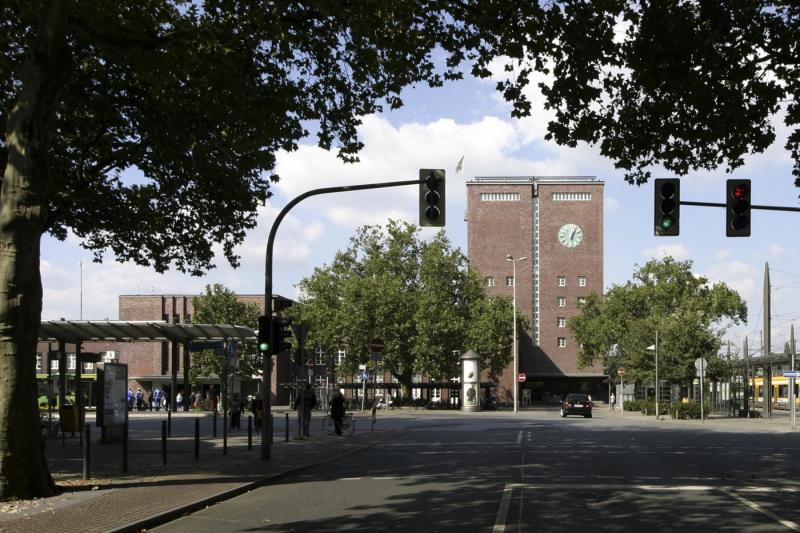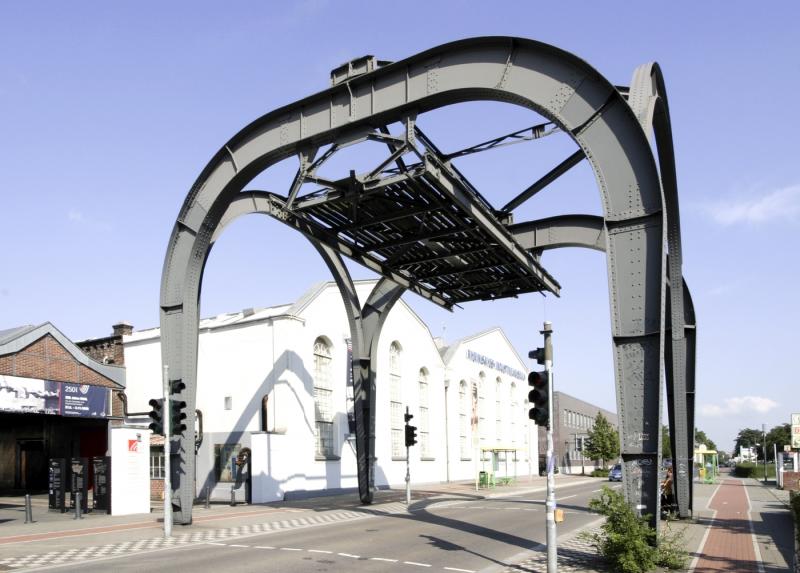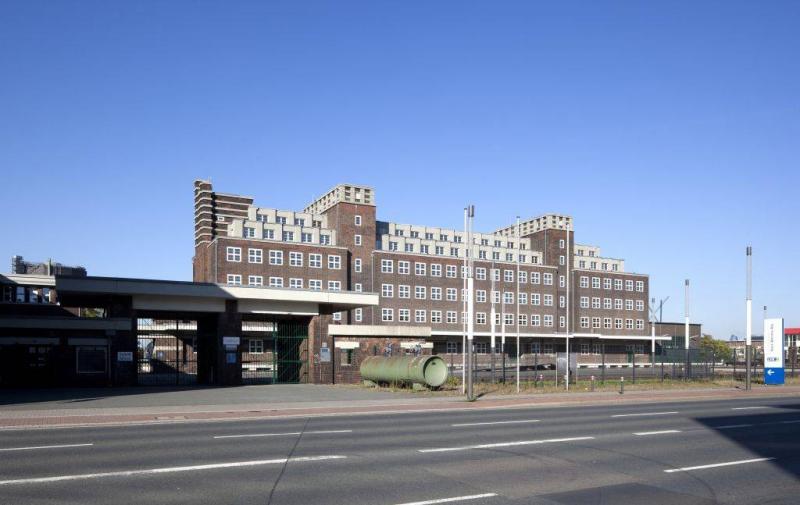Friedensplatz, 46045 Oberhausen
1924-26
Stadtbaumeister Ludwig Freitag Eduard Jüngerich
- keine Angabe -
Advanced search with more criteria
Total projects: 483

46045 Oberhausen
Distance: 0.20 km

46049 Oberhausen
Distance: 0.55 km

46047 Oberhausen
Distance: 2.07 km
At the site of today’s Friedensplatz, from 1854 to 1902 we found Styrumer Eisenindustrie AG – right in the city centre. After the works had gone bust and been demolished, town planner Eduard Jüngerich created a 50 x 180m axial ornamental square, Industrieplatz.
The magistrates’ court, built in a neo-renaissance style at the northern side of the square in 1907, was typical of the state buildings of imperial Germany and also reflected the increased representational leanings of the city. To honour Emperor Wilhelm II, the square was renamed "Kaiserplatz".
When the imperial rule ended, the square was re-renamed “Industrieplatz” and the four rows of sycamore trees were planted, too. From 1924-1927, the Reichsbank building and police HQ were built on the western and eastern side of the square respectively. Eduard Jüngerich and Ludwig Freitag planned the police HQ as a longitudinal brick building with a hipped roof. The facade facing Friedensplatz is broken down by two expensive portals. Both entrances feature richly designed jambs and lintels. Inside, the original interior has been preserved.
After WWII, Oberhausen made a political statement. The square was renamed “Friedensplatz” (peace square). In 1955, building Europahaus, by Hans Schwippert, on the southern side of the square enclosed it completely. In 1980, it was pedestrianised.
Author: Route Industriekultur/ Redaktion Baukunst NRW
Text last changed on 31.03.2008
Categories:
Landscape Architecture » Streets and Squares